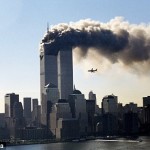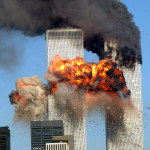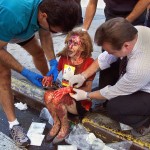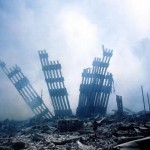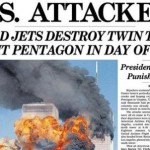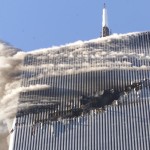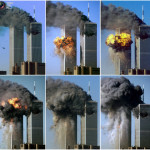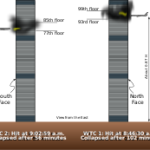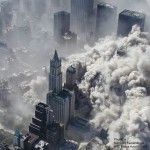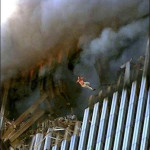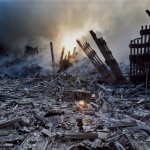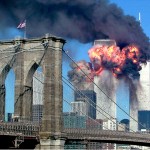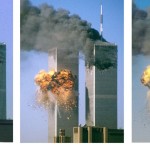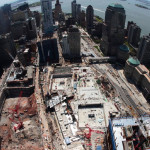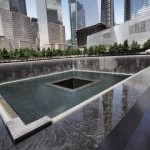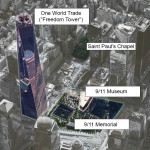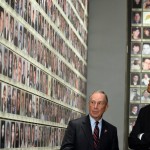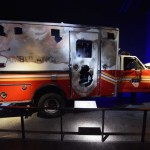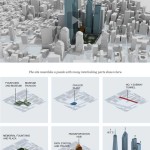1980
The first time I went to New York City was in 1980 as a 20-year old student during a trip that saw me working in an aluminium factory in Virginia, hitch-hiking to the west coast and returning by Greyhound buses. For an impressionable lad, NYC was bigger and more exciting even than its reputation for being the biggest and best of everything. Everything seemed larger than life, so I felt more like a tourist than ever before – my eyes upwards and all around with a look of awe on my face.
On the way back I stayed with a family of friends in Queens and got the subway in each day, then tramped the streets of Manhattan to see as much as possible. My very first day saw me travel to Battery Park, take a ride to Staten Island and back on the ferry to admire the Statue of Liberty. After that, my first port of call was to the World Trade Centre – the “twin towers.”
The two tall and spindly office blocks were to me every bit as iconic to New York as the Empire State Building. Every airborne picture of Manhattan island featured blocks, though it seems astonishing that they were only completed in 1973 on the site of the old “Radio Row”, a mere 7 years before I first saw them for real. This is a touch of background, courtesy of the 9/11 memorial site:
The Twin Towers were the centerpieces of the World Trade Center complex. At 110 stories each, 1 WTC (North Tower) and 2 WTC (South Tower) provided nearly 10-million-square feet of office space for about 35,000 people and 430 companies. They were the tallest buildings in New York City, and for a brief period upon their completion, they were the tallest buildings in the world. They attracted roughly 70,000 tourists and commuters every day.
The North Tower rose 1,368 feet – 1,730 feet with a large antenna – and the South Tower stood 1,362-feet high. On a clear day, views extended 45 miles from the top of the towers in every direction – far enough to see all five New York City boroughs, New Jersey and Connecticut.
The towers were massive. Each weighed more than 250,000 tons, contained 99 elevators and had 21,800 windows. Each floor was an acre in size and there was enough concrete in the towers to build a sidewalk from New York City to Washington, D.C. The complex even had its own zip code: 10048.
The two towers were surrounded by five other buildings that comprised the WTC complex. The Port Authority of New York and New Jersey had a police desk in 5 WTC, while 3 WTC was a hotel and office buildings.
I went to the South Tower and caught the lift up to the Top of the World observation deck, comprising a lift to floor 107 and two escalators up to the viewing platform on floor 110 – but despite the promise that you could see up to 45 miles clouds hung around the towers on that day, so I failed to get even one clear photograph! Somehow the view did not matter – it was enough to say I had been there, and even wrote a postcard to my parents from the lobby of the South Tower.
My day continued with a walk up 5th Avenue, but then and afterwards I always remembered fondly visiting the WTC. The prospect of the towers vanishing never occurred to me – they had an air of symbolic permanence, a reassuring presence that New York and America would continue to represent. In later years they survived an attempted bombing, with security being stepped up to protect against the risk of damage. The towers appeared impregnable, a fortress to Capitalism reaching into the Manhattan skies.
2001
The day of the terrorist attack is imprinted on my memory, much as people always remember what they were doing on the day when JFK was assassinated (it was my 4th birthday.) Lindsey was 6 and at primary school; Adam was 3 and presumably with the child minder while his mum was at work. I was home in Broxbourne, studying for an MBA exam at Henley.
By some ominous quirk of fate, I turned on the TV at lunchtime with the intention of watching the news, but I never switched off the TV and didn’t resume my studies that day.
My first vision was shocking: cameras trained from a distance showed smoke billowing from the North Tower. Confusion reigned: the commentators did not know what was happening and were speculating; it was, they suggested, an accident in which a plane had hit the tower and that a rescue operation was underway.
They were still speculating when grim reality struck. The second plane ploughed into the facade of the South Tower and thick black smoke followed as aviation fuel exploded. It took the brain a few seconds to register the awful truth: this was not an accident or coincidence; this was design and almost certainly terrorism.
More facts emerged during the day: the hijacking of the planes; a further flight hitting the Pentagon; Flight 93 crashing in Pennsylvania for then unknown reasons. Meanwhile, the fires raged and New York police and firefighters staged an attempt to rescue people from the remaining floors – there was even speculation about whether those in the floors above the impact zone could be rescued from the roof.
But nobody could speculate on the panic and terror for those inside. TV cameras recorded those jumping from the windows to escape the lethal flames and fumes inside, including the couple holding hands. Mercifully, they did not show the impact of bodies on the road below. Later we learned that over 200 people chose to die that way rather than the pain of asphyxiation and burning.
Then the south tower collapsed, the victim of fire-induced structural failure, the first of three buildings to give way on that day. It fell like a deck of cards, strangely graceful yet utterly horrific to watch. A cloud of dust, ash and debris swept through the surrounding streets for blocks around at high speed, carrying shrapnel and coating everyone and everything in its path. As the collapse became evident, people turned and ran for their lives, some into doorways and buildings, others just as far as their legs would carry them. TV coverage returned to pictures from a safe distance. Those with hand-held cameras filming from street level caught pictures of the oncoming dust storm then fled for their lives.
People emerged from one collapse but realised the lack of structural integrity of the north tower was now self-evident. It followed less than an hour later, starting fires in 7 World Trade Centre that led to a further collapse some while afterwards – though many other buildings were totally wrecked by debris and later demolished.
At that time you could not see anything through the fog of debris, just a pile of wreckage where once had stood the mighty twin towers.
Then the interviews started, the shock and horror etched into every face. I can’t remember at what point the blame fell upon Al Queda, though one thing was evident throughout: the thought of a major terrorist attack on US soil by terrorists from other countries was the ultimate wake-up call, an event so horrific it symbolically represented an attack on all things American.
That day I, and millions more, will never forget.
2007
My sister was married in Florida in 2007. It was my mother’s first visit to the USA, but her most treasured place to visit was unquestionably New York City. My children had been to Florida before, but not NYC. It was not difficult to decide that a trip there was long overdue, and almost without it being spoken that Ground Zero would be among our first ports of call.
We stayed in the basement of a Brooklyn brownstone house and got the subway to Battery Park, much as I had done 27 years before from Queens. We did the harbour boat trip to see Liberty and Ellis Island, without getting off at either, but the next part of our visit was a walk to the site.
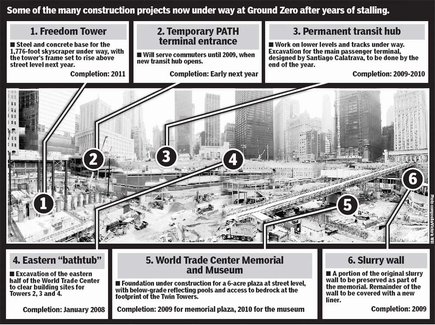
By then all the rubble and debris was removed, the designs for the buildings and memorial garden to go on the site chosen after an international competition, and construction work underway. At that point it was all subterranean – basements and foundations being built, but despite the vast number of construction workers there was a palpable air of quiet dignity about the site that I find difficult to describe. You might argue that it’s my imagination, based on what I know happened, but to me the atmosphere was quite unlike any construction site I’d ever seen.
The actual footprint of the twin towers was being built into a giant water feature surrounded by trees, but at that time there were only two huge squares with an inner, deeper square. Credit the city too for taking the chance to rebuild the transport hub in the district, with a huge new subway station to service the needs of workers in the new WTC buildings.
But what we really went for was the museum. I understand the museum is now much expanded and relocated to a permanent base, but at the time it was literally across the road from the Ground Zero site in a building that presumably must have been damaged and restored.
It was a humbling experience and handled in the right way – as a memorial to those who died. Most exhibits were personal items reclaimed from the debris, wherever possible telling the narrative of the person concerned. It finished with the memorial wall – photographs erected in the honour of the 2,996 casualties, including police, firefighters, those killed by dust and debris – everyone but the 19 terrorists. I think we all shed a tear as we viewed the memorial.
Future
There will be a further visit at some point, to view a revitalised area, the buildings complete and the memorial in place. New Yorkers and indeed the world will never forget that day, but out of grief comes hope renewed. 9/11 is now part of the history and folklore of America.



